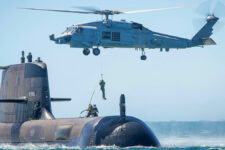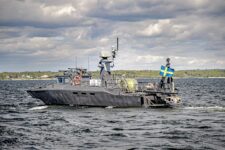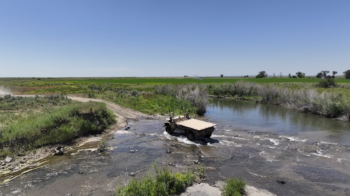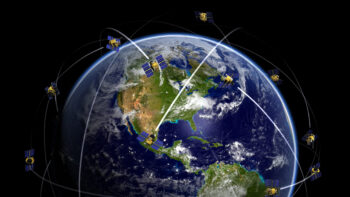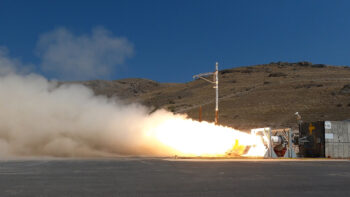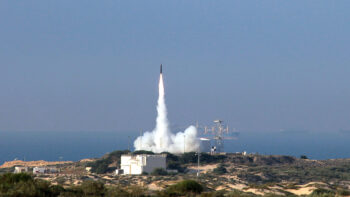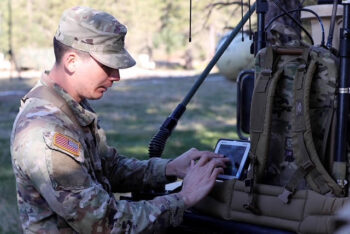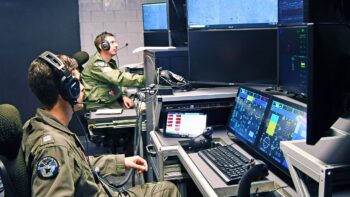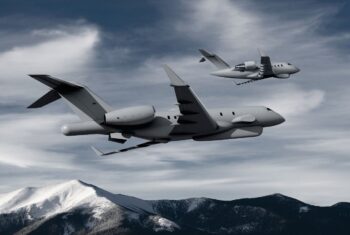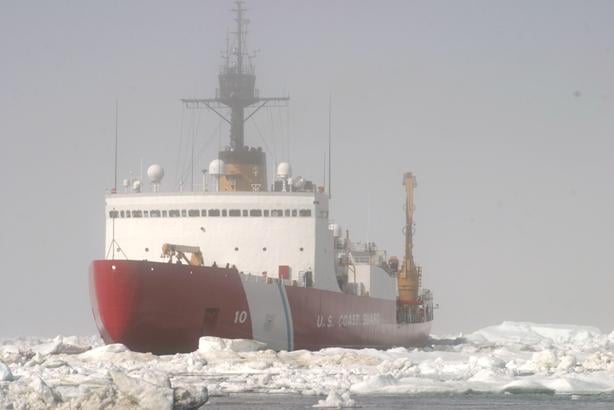
Coast Guard icebreaker Polar Star
SURFACE NAVY ASSOCIATION: The Coast Guard’s new heavy icebreaker will have space, weight, and electrical power set aside to carry offensive weapons, Commandant Paul Zukunft said here today. While Adm. Zukunft has publicly advocated making the icebreaker capable of carrying cruise missiles, this is the first confirmation we’ve seen that design work is indeed underway.

Adm. Paul Zukunft in Greenland
It’s vital to note that the icebreaker won’t be armed when it first hits the water in 2023. Zukunft’s current strategy is to work with the Russians. While they’re building cruise-missile-armed icebreakers, the Russians also participated with the US and six other Arctic nations in a huge search-and-rescue exercise off Iceland in September, he emphasized to reporters. Zukunft wants to use such non-threatening “soft missions” to build cooperation and establish an international norm that only coast guards operate in the arctic, not naval warships, he told reporters.
But the world may change for the worse, and retrofitting weapons onto a ship not designed to take them is difficult and costly. That’s why, as an insurance policy, the icebreaker will be designed to accommodate a possible armament package in the future.
“You reserve space, weight, and power (SWAP), and we’ve already been able to do that,” Zukunft told the Surface Navy Association conference this morning. “To actually specify which systems, that would be premature at this point.” Whatever weapons were added would need to be “modular,” he said, ideally fitting in standard CONEX containers.
Working closely with the US Navy, which is funding the first icebreaker, Zukunft said, “we’ve been able to find offsets to drive the cost down under $1 billion,” the original estimate, “(and) reserve the space weight and power necessary to fully weaponize these and make these a capable platform offensively in the event this world changes in the next 5, 10, even 15 years from now. You can’t project out the status quo.”
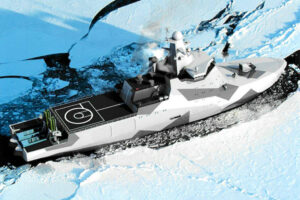
Concept drawing of Russian armed icebreaker.
Setting aside space, weight, and power for future weapons is actually “pretty easy to do” in the design process, Zukunft told reporters after his public remarks. But keeping the option open does have a significant impact on the ship, and designers must consider not only how much room to set aside but how the added weight might affect the stability and seakeeping of the ship. “It’s a lot of displacement, a lot of power,” he said.
Is it a lot of money? Not now, up front in the design process, but potentially later, when and if weapons are actually installed: “It will be an outyear cost,” Zukunft said.
Funding the icebreakers is a fraught issue. While the first ship is being funded by the US Navy, subsequent ships might have to fit in the much tighter budget of the Department of Homeland Security, which oversees the Coast Guard.
“The discussion will need to be held with our department, if this become as DHS-funded project,” Zukunft told reporters. “That discussion will be held probably over the next year or two so it would be premature for me to speculate.”
Meanwhile, the icebreaker program is already building up steam. Industry studies are “pretty far along,” Zukunft told reporters. He plans to award a construction contract for the first ship early in fiscal year 2019 (which begins this October), followed by a block-buy contract to buy subsequent ships at a lower price.
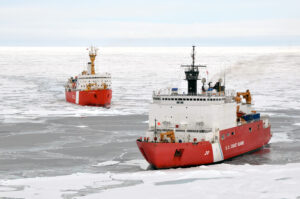
A Canadian Coast Guard vessel rendezvous with US Coast Guard icebreaker Healy (foreground) in the Arctic.
The first ship in a class is always more expensive and more uncertain, so trying to bring it into a block buy would be unwise. That’s especially true for icebreakers, whose hulls and engines undergo stresses like no other surface ship. Some structures require steel two feet thick, Zukunft said, which means industry to relearn specialized skills and rebuild tooling last used in 1976.
The first ship would be finished in 2023 and enter service soon after. Zukunft wants at least three heavy icebreakers and three medium ones, although he’s open to trading some or all the mediums for additional heavies.
America’s only existing heavy icebreaker, the Polar Star, is “living on borrowed time,” Zukunft said. At 41 years old, many of the ship’s parts are no longer manufactured: The Coast Guard has been scavenging them off its sister ship, the Polar Sea, now an inoperable “organ donor.” Even with annual shipyard overhauls, the risk of an unexpected, catastrophic breakdown rises with every year of heavy battering in icy waters, and if the Polar Star gets stuck in ice, the US has nothing powerful enough to rescue it.
Japanese marines to regularly rotate through Australia, as US-AUS-Japan military ties strengthen
US Defense Secretary Lloyd Austin said categorically that “we expect that Japan will join AUKUS Pillar Two at some point in the not-too-distant future to work on specific projects that have yet to be named.”

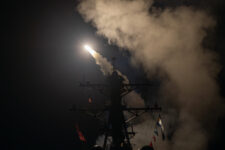

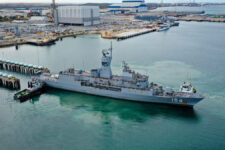


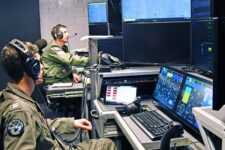

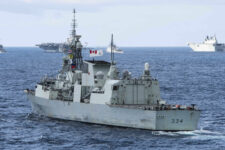
![vlcsnap-2023-01-25-09h34m31s959[1]](https://breakingdefense.com/wp-content/uploads/sites/3/2024/11/vlcsnap-2023-01-25-09h34m31s9591-225x150.png)

